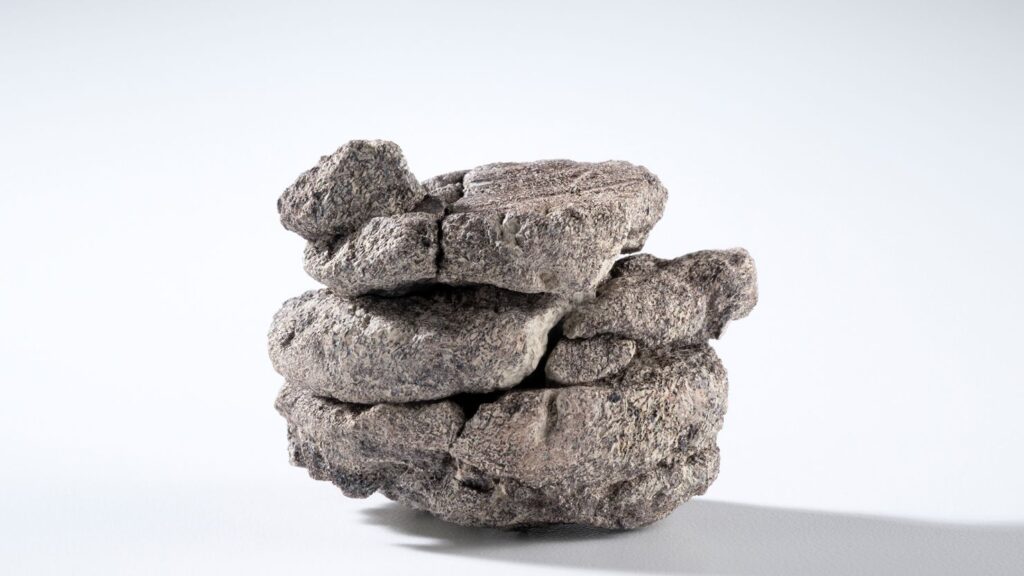The phrase “leave no stone unturned” has taken on new meaning for paleontologists at the Denver Museum of Nature and Science who discovered a special fossil hidden right under their noses — beneath the museum’s parking lot.
The dinosaur bone came to light in January during a drilling project to study the layers of rock underneath the site, the museum announced on July 9. The team had planned to pull an Earth core sample, a long cylindrical piece of rock or sediment, and came across a partial fossil.
At about 2.5 inches (6.4 centimeters ) in diameter — the width of the extracted rock core — the disk-shaped specimen is the vertebra of a plant-eating dinosaur that roamed the region more than 67 million years ago. At a depth of about 760 feet (230 meters) below the surface, it is the oldest and deepest fossil ever found within Denver, according to the museum’s release.
There is not enough of the fossil to determine its species, but this rare find helps fill in a picture of the ecosystem during the Cretaceous period in what’s now Denver, said Dr. James Hagadorn, the museum’s curator of geology. Scientists were able to narrow the fossil down to an herbivorous group of bipedal dinosaurs known as ornithopods, and it’s the first ornithopod to be found in Denver’s city limits.
“We knew those dinosaurs were (nearby in other parts of) Colorado or Wyoming, but we didn’t know that they were in Denver, too … but we suspected it right at this time period,” Hagadorn said. “Now, we have another plant eater that’s been cruising around Denver munching on, who knows, gingers and palm leaves and other ferns and plants 67 million years ago.”
